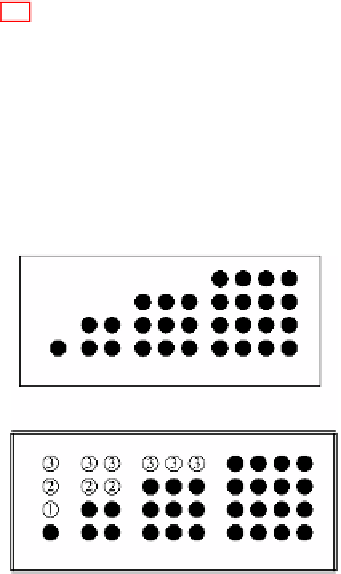Information Technology Reference
In-Depth Information
5.6.2
Figurate Numbers
The study of figurate numbers was an old subject of Greek mathematics. However,
its investigation in the 17th century was the beginning of important discoveries
in discrete mathematics. Here, we will show a phenomenon somewhat related to
Nichomachus' theorem.
A triangular configuration of objects has the following structure:
o
oo
ooo
oooo
ooooo
The total number of objects of a triangular configuration
T
n
of
basis n
is given,
according to formula 5.2:
T
n
=
n
(
n
+
1
)
/
2
(5.4)
n
2
n
2
,thatis,2
T
n
=
n
2
Of course,
T
n
+
T
n
−
1
=
therefore
T
n
+
T
n
−
n
=
+
n
,which
provides another way of proving the equation above.
A square number
n
2
can be represented by arranging
n
2
objects in a configuration
Q
n
of
n
rows of objects each of them with
n
objects. Now let us evaluate the sum of
the squares
Q
i
for
i
ranging from 1 to
n
(see Fig. 5.12).
Fig. 5.12
Square configurations of increasing side (top) and their extension with added (num-
bered) objects (bottom)
The following equation expresses the way of obtaining the top configuration of
Fig. 5.12 from the bottom configuration of the same figure, by removing three sums
of triangular numbers (the number of circles with number 1, with number 2, and
with number 3):


